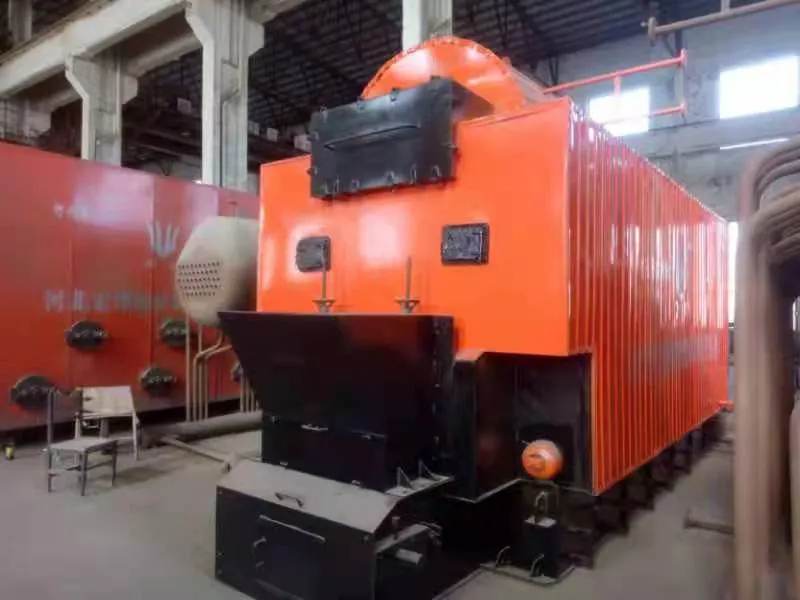
Dec . 14, 2024 22:14 Back to list
1 ton boiler price
Understanding the Price of a 1% Ton Boiler
When it comes to industrial applications, boilers play a critical role in producing steam or hot water for various processes. Among the different types of boilers available in the market, the 1% ton boiler, although not as common as larger units, could find its niche in specific smaller-scale operations. This article delves into the factors influencing the price of a 1% ton boiler and provides insights into its economic considerations.
The Basics of a 1% Ton Boiler
A 1% ton boiler refers to a boiler with a capacity of producing one ton of steam per hour under specific operating conditions. These units are often classified under steam boilers and are utilized in various sectors, including textiles, food processing, chemical manufacturing, and even small-scale power generation. The price of such a unit can be influenced by several aspects, including design, fuel type, efficiency, and manufacturer credentials.
Factors Influencing the Price
1. Type of Boiler The price can vary significantly based on whether the boiler is a fire-tube, water-tube, or electric boiler. Fire-tube boilers are generally less expensive, but their efficiency might not match that of water-tube or electric boilers, which often come with a higher price tag due to their advanced design and efficiency.
2. Material Quality The materials used in constructing the boiler also play a crucial role in determining the price. High-quality steel construction will typically lead to a higher price due to enhanced durability and safety. Additionally, boilers made from corrosion-resistant materials may be pricier but will ultimately reduce maintenance costs over time.
3. Fuel Type The choice of fuel—whether gas, oil, or biomass—directly impacts operational costs and boiler pricing. Gas-fired boilers tend to be more expensive upfront but can offer savings over the long term due to lower fuel costs. Oil boilers may have higher fuel prices, while biomass options could be cheaper but might entail higher initial investments for the boiler design and installation.
4. Efficiency Ratings Boilers with higher efficiency ratings (like those achieving 90% or more) often come at a premium, but they can save significant amounts of money in energy bills over time. Therefore, while the upfront cost may be higher, the overall investment might pay off through operational savings.
1 ton boiler price

5. Regulatory Compliance In many regions, boilers must comply with stringent regulations regarding emissions and safety standards. Meeting these regulations may require additional technology or enhancements, consequently increasing the price. Purchasers should consider these compliance costs when budgeting for a new unit.
6. Manufacturer and Warranty Brand reputation plays a crucial role in pricing. Established manufacturers with a history of reliability and customer satisfaction may charge more, but their products could offer better performance and support. Additionally, robust warranties can increase initial boiler costs but provide peace of mind for future maintenance and reliability.
Price Range Analysis
In terms of numerical values, a 1% ton boiler can range significantly in price, typically from $5,000 to $25,000, depending on the aforementioned factors. In countries with emerging markets, the price may be lower due to reduced labor costs and local manufacturing capabilities. Conversely, prices can be higher in regions with stringent import duties or limited local production.
The Economic Perspective
When budgeting for a 1% ton boiler, it’s essential to look beyond the initial purchase price. Consider the total cost of ownership, including installation, maintenance, fuel consumption, and potential downtimes. Investing in a more expensive but efficient boiler could lead to substantial savings in the operational phase.
Moreover, businesses must also evaluate their specific requirements and select a boiler that best fits their operating environment. Factors such as required steam pressure, temperature, and space availability will dictate which boiler type is the best fit.
Conclusion
Understanding the intricacies involved in the pricing of a 1% ton boiler is crucial for potential buyers. With numerous factors at play, including boiler type, material quality, efficiency ratings, compliance on regulations, and manufacturer reputation, consumers need to assess their unique needs and long-term operational goals. By carefully evaluating these considerations, businesses can make informed decisions that align with their financial capabilities and operational efficiencies, ensuring a productive boiler investment that meets their steam requirements.
-
High-Efficiency Commercial Oil Fired Steam Boiler for Industry
NewsJul.30,2025
-
High-Efficiency Biomass Fired Thermal Oil Boiler Solutions
NewsJul.30,2025
-
High Efficiency Gas Fired Thermal Oil Boiler for Industrial Heating
NewsJul.29,2025
-
High-Efficiency Gas Fired Hot Water Boiler for Sale – Reliable & Affordable
NewsJul.29,2025
-
High Efficiency Biomass Fired Hot Water Boiler for Industrial and Commercial Use
NewsJul.29,2025
-
High-Efficiency Biomass Fired Hot Water Boiler for Industrial Use
NewsJul.28,2025
Related PRODUCTS






















